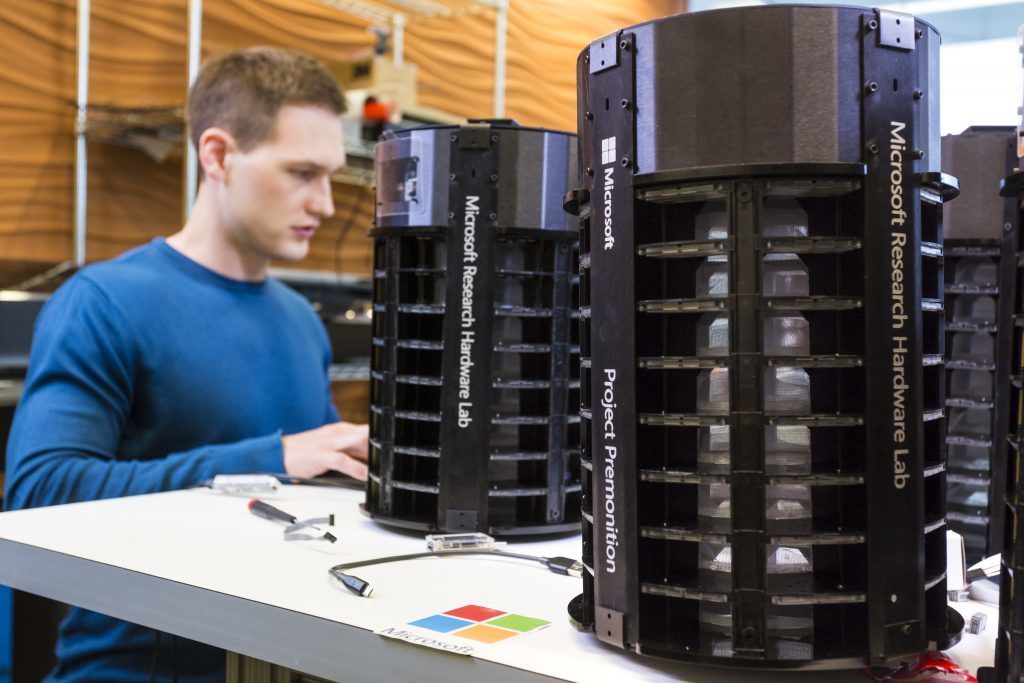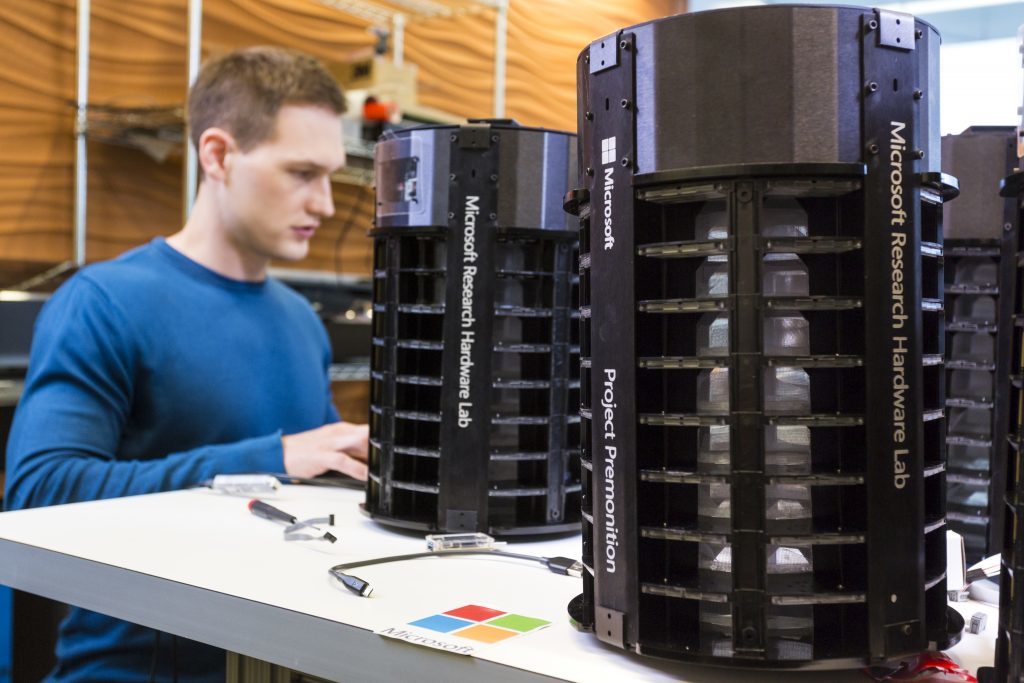
Harnessing the power of AI to transform healthcare
One of the many remarkable things about artificial intelligence is that while we tend to think of it as something that will have a big effect in the not-too-distant future, it is already transforming people’s lives in profound and powerful ways today. In factories and warehouses, AI is improving workplace safety by scanning thousands of videos to detect potential risks. In the U.S., researchers are exploring how AI can help public health organizations around the world prevent the spread of deadly diseases like Ebola, Chikungunya, and Zika by detecting the presence of pathogens in the environment and stopping transmission to humans before outbreaks can begin.
I believe this is the true promise and challenge of AI – using these new technologies to create a healthier and safer world for everyone. Now that AI has given computers the ability to recognize words and images, discover patterns in complex systems and reason and learn much like people do, it is enabling our devices to behave more naturally and more responsively. This is transforming how we understand the world and augmenting our uniquely human talents and abilities in ways that will enable us to begin to find answers to some of humanity’s most pressing challenges.
This is particularly true when it comes to human health. Today, it is possible to imagine a world where we have discovered new approaches that enable us to address some of our most pressing challenges in healthcare, including heart disease, chronic illnesses, and cancer. The good news is that innovators around the globe are already working on these issues. From detection to preventive care and personalized medicine, the opportunities to us AI to improve outcomes and reduce costs appear to be nearly limitless.

In India, for example, Microsoft is proud to work with Apollo Hospitals, one of nation’s largest private healthcare companies, to use AI to improve detection of cardiac illnesses that cause more than 3 million heart attacks in that country every year. Until now, it’s been difficult for doctors to identify patients who are at risk for coronary disease because most prediction models are based on studies conducted in Europe and North America and don’t apply well to Indian populations. For example, high LDL cholesterol, which is a significant cause of heart attacks in western countries, is less common in India.
Our approach is to combine the rich data and deep expertise that Apollo offers with Microsoft’s powerful cloud and AI capabilities to develop a scoring system to identify patients in India who are at high risk for suffering a heart attack.
To do this, a team of Apollo clinicians and data scientist started by reviewing more than 400,000 patient records from its hospitals around the country and found that nearly 60,000 patients had suffered a cardiac event after a health checkup. The challenge was to uncover the risk factors in the data that existing models had overlooked. To do this, they uploaded all the data they had collected to the cloud using Microsoft Azure and then worked with Microsoft Azure Machine Learning services to search for hidden correlations.
The team started with 100 potential risk factors and 200 lab data points. Using the massive computing power of the cloud, they trained machine learning algorithms to find the statistical significance of each factor in the occurrence of future heart attacks. This enabled them to create a model that identified 21 risk factors in Indian populations. Dr. K. Shiv Kumar, Apollo Hospitals’ chief of Chief of Cardiology, said the resulting model is twice as accurate at predicting the probability of future coronary disease as previous models. Not only is this transforming how physician’s conduct preventive health checkups, but they are now developing an AI-powered app that would allow anyone to find their heart risk score without visiting a doctor for a detailed health checkup.
In China, Ray Zhang, CEO of a startup company called Airdoc, recruited a team of engineers to develop an AI-based diagnostic tool that can instantly detect signs of chronic illnesses including diabetes, hypertension, arteriosclerosis, age-related macular degeneration, and more – simply by taking a high-resolution image of the back of the eye.
The device takes advantage of the fact that examining the human retina is an effective way to assess the health not just of the eye, but to look for evidence of other diseases. To create it, the Airdoc team used thousands of retinal scans to create an algorithm using Microsoft Azure’s machine learning capabilities that is trained to look for tiny abnormalities such as specks, spots, and deformed blood vessels that can be warning signs for a wide range of health issues.
The Airdoc device is similar to the scanner optometrists use for routine eye exams. To use it, a patient sit on a stool, place their chin on a padded brace, and look into an eyepiece. The algorithm then automatically adjusts the angle until a green cross comes into focus and captures a high-resolution, medical-grade image that is instantly uploaded to the cloud, where it takes less than a second to conduct a detailed analysis that rates susceptibility to a long list diseases as either low, medium, or high. The results are then sent to the patient’s smartphone, with a recommendation to seek professional medical help if there are signs of potential problems.
Currently, the Airdoc device can recognize signs of more than 30 diseases. Eventually, it will be able to detect 200. The plan is to make it available in more than 1,000 hundreds optical retail stores across China over the next few years. The Airdoc device significantly reduces the amount of time physicians will need to spend reviewing and assessing scans, so they can focus more on identifying and treating patients with serious health issues. The potential to provide a simple and inexpensive way to detect not just eye problems but a wide range of diseases has the potential to transform when and how people begin treatment for chronic illnesses in China and around the world.
We’re also working with the Princess Margaret Cancer Center at University Health Centre in Toronto to redefine cancer treatment through a remarkable new approach called “single cell sequencing” that enables doctors to analyze the genetic makeup of every single cell in a cancerous tumor and then select a combination of drugs that is optimized to kill the greatest number of cancer cells. Typically today, doctors try one drug at a time to find the most effective combination for each individual patient. By utilizing the power of Microsoft Azure Machine Learning and the cloud, single cell sequencing is enabling doctors to predict how every cell will respond to each of the thousands of compounds that are available for cancer treatment and then create a truly personalized therapy based on the specific genetic characteristics of each cancerous tumor.
Azure also provides a common platform for sharing medical data and analytic tools with researchers and physicians across the country. Scientists at Princess Margaret Cancer Center now envision a time in the not-to-distant future when this kind of detailed genomic analysis will be available for every patient in Canada.
These examples are just the beginning when it comes to the outpouring of AI research and innovation Microsoft and its partners are involved in right now – and not just in healthcare. In future posts, I look forward to sharing how Microsoft is also helping innovators and entrepreneurs use the power of AI to transform the industries of agriculture and education.
The post Harnessing the power of AI to transform healthcare appeared first on The Official Microsoft Blog.
0 Comments on "Harnessing the power of AI to transform healthcare"